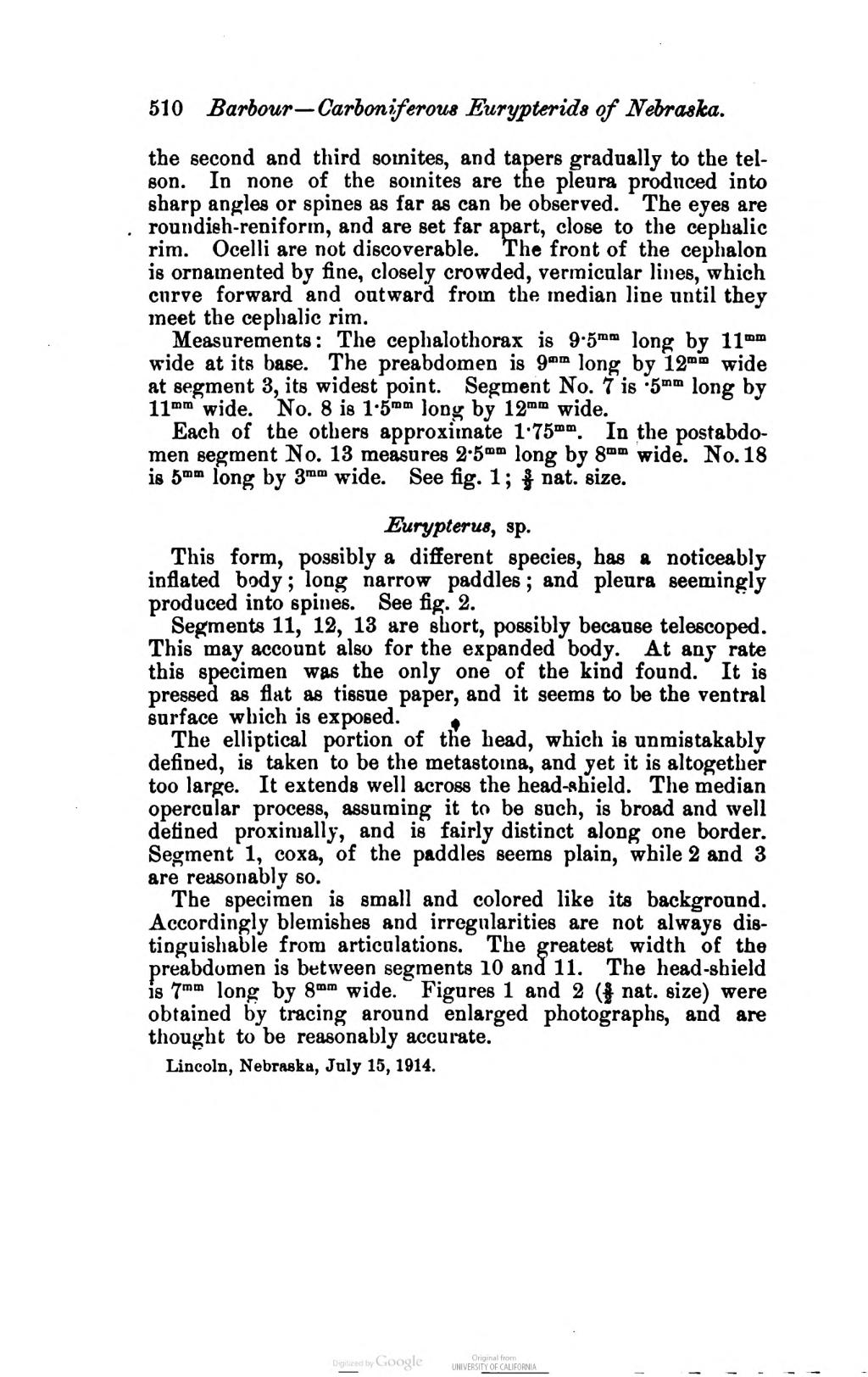the second and third somites, and tapers gradually to the telson. In none of the somites are the pleura produced into sharp angles or spines as far as can be observed. The eyes are roundish-reniform, and are set far apart, close to the cephalic rim. Ocelli are not discoverable. The front of the cephalon is ornamented by fine, closely crowded, vermicular lines, which curve forward and outward from the median line until they meet the cephalic rim.
Measurements: The cephalothorax is 9·5mm long by 11mm wide at its base. The preabdomen is 9mm long by 12mm wide at segment 3, its widest point. Segment No. 7 is ·5mm long by 11mm wide. No. 8 is 1·5mm long by 12mm wide.
Each of the others approximate 1·75mm. In the postabdomen segment No. 13 measures 2·5mm long by 8mm wide. No. 18 is 5mm long by 3mm wide. See fig. 1; nat. size.
Eurypterus, sp.
This form, possibly a different species, has a noticeably inflated body; long narrow paddles; and pleura seemingly produced into spines. See fig. 2.
Segments 11, 12, 13 are short, possibly because telescoped. This may account also for the expanded body. At any rate this specimen was the only one of the kind found. It is pressed as flat as tissue paper, and it seems to be the ventral surface which is exposed.
The elliptical portion of the head, which is unmistakably defined, is taken to be the metastoma, and yet it is altogether too large. It extends well across the head-shield. The median opercular process, assuming it to be such, is broad and well defined proximally, and is fairly distinct along one border. Segment 1, coxa, of the paddles seems plain, while 2 and 3 are reasonably so.
The specimen is small and colored like its background. Accordingly blemishes and irregularities are not always distinguishable from articulations. The greatest width of the preabdomen is between segments 10 and 11. The head-shield is 7mm long by 8mm wide. Figures 1 and 2 ( nat. size) were obtained by tracing around enlarged photographs, and are thought to be reasonably accurate.
Lincoln, Nebraska, July 15, 1914.

